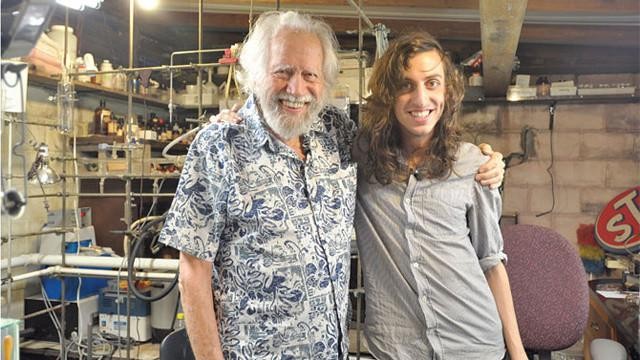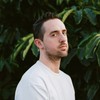Photos by the author
Despite its progressiveness and advancements in other areas of culture and life, Japan has fairly archaic drug laws. These draconian preventative measures are the country's response to the waves of amphetamine addiction it's grappled with since the end of WWII. First time offenders, regardless of the particular illegal drug they're caught with, face steep fines, years in prison, and an almost guaranteed shunning from friends, families, and employers upon their release.With risks this severe, coupled with a steady stream of government disinformation, it's no wonder that a minuscule percentage of the Japanese population has experimented with illicit substances. While the more square elements of society might chalk these low usage figures up to a win, one Japanese man fears the laws and taboos surrounding drugs in Japan may actually be robbing his fellow citizens of certain benefits.By concocting a replication of the notorious South American psychedelic drink, ayahuasca, using only traditional Japanese herbs and antidepressants, Aoi Glass claims to have found a legal loophole for providing an ayahuasca-like experience to the masses.Glass has been moonlighting as pseudo-shaman in a quiet, suburban Tokyo neighborhood for more than three years. I visited his home last month to ask about the psychedelic services he provides.Glass, a graduate of Hirosaki University's Agriculture Biotechnology department, told me he initially began his research into ayahuasca as part of an effort to treat his friends' depression, after several acquaintances lost their jobs.
"I started by smoking all the random grass seeds I found on the street for three years and writing down the effects. Also with random mushrooms and leaves," he explained. "Then I studied ayahuasca for one year. I studied all the elements that it contains and tried to recreate them from the seeds and herbs I had smoked and studied while also ejecting the elements that induce vomiting."
From there, Glass says he began growing ingredients, testing his concoctions on himself twice a week for six months straight, tweaking the recipe along the way. After settling on a formula, Glass claims he had medical tests done on his blood, urine, and semen to ensure his recipe, served as a brewed tea, wouldn't inadvertently be poisoning people.When it comes to the mixture's ingredients, Glass offers full transparency, both to me and the world. He's posted the recipe, along with those for other illegal drug facsimiles on Cookpad, a Japanese recipe sharing site. The main ingredients for Glass's mixture are "acacia root, a leaf from a different breed of acacia, and mountain lespedeza (which adds the tryptophan)," which he brews into a tea. He then crushes up Aurorix antidepressant pills, which he asks the customer to source and bring on their own due to their controlled status, to keep everything legal.Glass shies away from comparing himself to a shaman and his tea to actual ayahuasca, preferring instead to call himself a "counselor" offering "treatment."Since Glass has never tried authentic ayahuasca himself, I spoke with one of his customers who claims to have also tried legitimate ayahuasca in Bueno Aires. "What I experienced was exactly the same," the customer told me, wishing to stay anonymous due to the taboos surrounding drug use in Japan. "The ayahuasca [in Buenos Aires] enabled me to access some specific, deep part of my consciousness. It looked like a kaleidoscopic labyrinth. When I did ayahuasca for the second time, in Tokyo [using Glass's brew], I saw the same vision and felt like 'wow, I came back here again.' I could clearly feel it was the same room in my mind."

Another anonymous patient of Glass's, who sought the purported therapeutic benefits of the brew, told me that the experience helped her battle depression brought about by problems she'd been having with her parents. "You can't legally say it's a medical cure unless the government approves," she qualified. "But, in my personal opinion, this cured me of these feelings."As this all sounded great but possibly too good to be true, I asked author and ayahuasca expert Robert Tindall to assess Glass's novel take on the traditional medicine. Tindall was relieved to hear of Glass's apprehension about outright calling his brew an imitation ayahuasca, stating that "as an ethnologist coming from the more indigenous perspective, there is no such thing as a substitute for ayahuasca. In the indigenous way, you come to know the plant by imbibing it and getting to know its spirit and teaching capacities and you develop a relationship with it. We [non-indigenous people] simply can't do that."Glass's approach of molecularly breaking down "sacred plants that have been used for thousands of years in traditional societies," isn't necessarily a bad thing, though, said Tindall. "It sounds like what he's innovated could be very helpful, and he's actually done what many shamans do, which is combine plants based on instinct, intuition, and empirical study." Tindall added that Glass's treatment might be arriving "just in time," as "Westerners' hunger for ayahuasca is stripping the rainforest bare. Even the reputable shamans are looking forward and endeavoring to develop other ways to do their healing work with other plants."
Curious about what is actually happening to users imbibing Glass's drink, I reached out to Dr. Gerald Thomas, a Collaborating Scientist at The Centre for Addictions Research of British Columbia, who has extensively researched ayahuasca and its abilities to treat maladies like addiction."There is no great mystery here," Thomas said after I asked him to weigh in on the ingredient list. "Both [lespedeza and acacia] are potent sources of DMT and the pharmaceutical is a safe and well regarded MAO inhibitor. Most things we ingest contain trace amounts of DMT, which is among the most powerful psychedelics known. Humans digestive systems create an enzyme (MAO) that instantly breaks DMT down so we don't get high from what we eat. The drug listed above, like the bark from the Ayahuasca Vine, deactivates MAO so the DMT becomes bioavailable when ingested."
While he acknowledged the potential problems this (and any) psychedelic experience could have, Thomas concluded that, "with the right preparation and if used in the right circumstances with clear intent, psychedelics can be potent healing aids."Not everyone is sold on Glass's concoction, however. Associate professor of pharmacology at Rush University, James T. O'Donnell, told me that, assuming I hadn't fallen victim to an elaborate hoax, the ingredients Glass is using are not without their dangers. Noting that "there's a suicide risk" for abusing the antidepressant Aurorix, which "is not approved in the USA.""Hallucinogens are dangerous, and most are illegal," O'Donnell cautioned. "Trying to beat the system by using other substances to achieve a pseudo high is not without risks, health and legal."
However he chooses to market it and whatever the risks may be, it's clear Glass has lofty but benevolent ambitions for his therapeutic brew. Hoping his breakthrough will beget others, he plans to soon offer the treatment to major Japanese universities and tech incubators, in an attempt to foment some Silicon Valley–like outside-the-box thinking."All the innovations are coming from the US, like the iPhone and Google," laments Glass. "We have less in Japan, and I think it's because we've had less experience with hallucinatory drugs, which allow for more creativity to be unlocked. I want the smart people to have this experience so they will have more innovations and help the entire country."Translation help provided by Ryou Ohtsuka.Follow Justin Caffier on Twitter.
Advertisement
Advertisement

Another anonymous patient of Glass's, who sought the purported therapeutic benefits of the brew, told me that the experience helped her battle depression brought about by problems she'd been having with her parents. "You can't legally say it's a medical cure unless the government approves," she qualified. "But, in my personal opinion, this cured me of these feelings."
Advertisement
Advertisement
